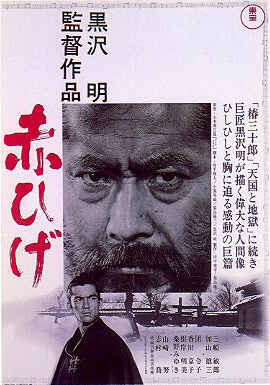 |
| Kyoko Kagawa in Mother |
Toshiko Fukuhara: Kyoko Kagawa
Shinjiro: Eiji Okada
Ryousuke Fukuhara: Masao Mishima
Susumo Fukuhara: Akihiko Katayama
Hisako Fukuhara: Keiko Enami
Uncle Kimura: Daisuke Kato
Tetsuo: Takashi Ito
Aunt Noriko: Chieko Nakakita
Director: Mikio Naruse
Screenplay: Yoko Mizuki
Cinematography: Hiroshi Suzuki
Music: Ichiro Saito
Mutatis mutandis, Mikio Naruse's Mother could almost have been a 1950s Hollywood family drama starring Irene Dunne or Myrna Loy in the title role: a woman struggling to help her family survive difficult times. Of course, the necessary change would be that of setting: Mother is very much a portrait of lower middle class Japan in the immediate postwar years. Masako Fukuhara is not just trying to feed her family but also struggling with the effects of the war, including disease -- the death of her only son from tuberculosis -- and crippling loss -- she and her husband, Ryosuke, take in her sister Noriko's little boy, Tetsuo, after Noriko returns from Manchuria, where her husband was killed. Masako's struggle gets worse after Ryosuke works himself to death reestablishing the family's laundry business. Fortunately, there is Uncle Kimura, who had been a prisoner of war in Russia, to help out in the laundry, but Masako still has to raise her teenage daughter, Toshiko, as well as her younger daughter, Hisako, called Chako. What links Mother to the Hollywood films is some sentimental melodrama, a characteristic not usually ascribed to Naruse's work, and some rather conventional comic relief, such as the scene in which Toshiko's boyfriend, Shinjiro, sees her dressed as a bride and thinks she's marrying someone else, when in fact she's modeling for Noriko, who is trying to make it as a hair stylist. Fortunately, Naruse knows how to work against sentimentality and convention with some distancing tricks. In mid-film we are suddenly presented with a title card that says "The End" in Japanese -- a moment that actually made me reach for the remote control to see if the screening service had somehow skipped to the end. It turns out to be the end title for a movie that Toshiko and her friends have gone to see -- a weepie that has left them in the tears guaranteed by its advertising. It also helps that Mother has the extraordinary Kinuyo Tanaka and Kyoko Kagawa playing mother and daughter -- a relationship they would repeat in Kenji Mizoguchi's Sansho the Bailiff (1954). It's also fun to see Eiji Okada as Shinjiro, one of his early performances, before he achieved international fame in Hiroshima Mon Amour (Alain Resnais, 1959) and Woman in the Dunes (Hiroshi Teshigahara, 1964).
Watched on Filmstruck Criterion Channel





